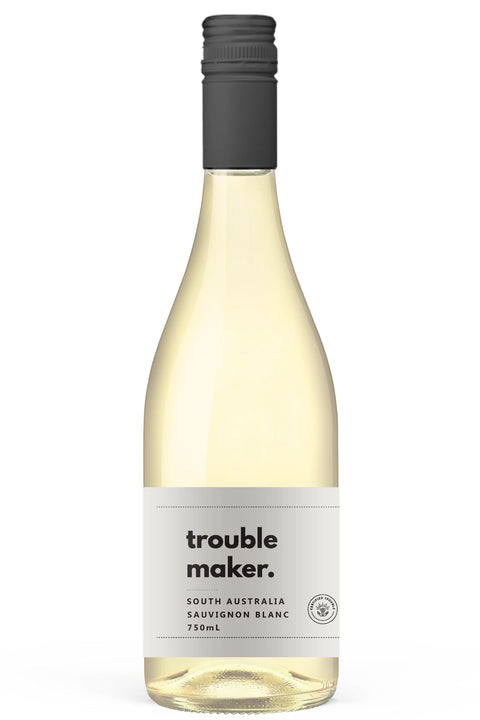McLaren Vale, a world-renowned wine region just south of Adelaide, South Australia, is celebrated for its potent Shiraz and elegant Grenache. However, the region’s diverse terroir and cooling maritime influence also provide the perfect canvas for crafting exceptional Chardonnay.
Far from the heavily oaked, buttery Chardonnays of a bygone era, modern McLaren Vale Chardonnay showcases a vibrant spectrum of styles, from crisp and unwooded to rich and complex. This versatility makes it a captivating wine for the dinner table, capable of complementing a vast array of Australian dishes.
Key Features of McLaren Vale Chardonnay
-
Terroir and Climate: McLaren Vale's Mediterranean climate, characterised by warm, dry summers and mild winters, is tempered by the cooling sea breezes from the Gulf of St Vincent. This maritime influence is vital, as it helps to preserve the natural acidity in the Chardonnay grapes, which is essential for crafting a balanced and refreshing wine.
-
Oaked vs. Non-Oaked Styles: The region produces two distinct styles of Chardonnay. Non-oaked wines are fermented in stainless steel to preserve fresh fruit and acidity, while oaked wines are fermented or aged in oak barrels to impart complex notes of vanilla, spice, and toast.
-
Winemaking Techniques: Winemakers employ various techniques to shape the final wine. These can include barrel fermentation, aging on lees (spent yeast cells) to add texture and complexity, and malolactic fermentation to soften the wine's acidity and introduce buttery notes.
-
Versatility and Food-Friendliness: With its dual personalities, McLaren Vale Chardonnay is an incredibly food-versatile wine. It can be paired with light seafood and salads in its unwooded form, or with richer, creamier dishes in its oaked form.
-
Flavour Spectrum: The flavour profile of McLaren Vale Chardonnay is broad and expressive. It ranges from primary fruit flavours of citrus, green apple, and white peach in younger, unwooded styles to more complex secondary notes of butterscotch, toasted nuts, and brioche in oaked examples.
-
Aging Potential: While many Chardonnays are enjoyed young, premium examples from strong vintages possess the structure and acidity to age gracefully. With time, these wines can develop complex tertiary flavours of honey, nuttiness, and a richer, more integrated texture.
Flavour Profile and The Oaked vs. Non-Oaked Debate
The flavour profile of McLaren Vale Chardonnay is a direct result of winemaking choices, particularly the use of oak.
Non-Oaked (Unwooded) Chardonnay
This style is a pure expression of the Chardonnay grape. It is fermented in inert vessels, typically stainless steel, to preserve its vibrant primary fruit character and natural acidity. On the nose, expect clean and crisp aromas of green apple, citrus fruits like lemon and grapefruit, and white peach.
The palate is typically lean, with a zesty acidity and a clean, mineral-driven finish. It is a refreshing, light-bodied style that is often compared to the Chablis region of France. This style is favoured by those who appreciate Chardonnay’s inherent elegance without the influence of wood.
Oaked (Wooded) Chardonnay
The oaked style of McLaren Vale Chardonnay is a product of careful maturation in oak barrels. The oak imparts a distinctive character to the wine, adding layers of flavour, texture, and aroma. On the nose, expect more complex aromas of vanilla, spice (nutmeg, clove), and a subtle toasted nuttiness.
The palate is typically fuller-bodied, with a creamy, rich texture and flavours of butterscotch, brioche, and toasted oak. The fruit flavours of peach and melon are often present but are integrated with the oak characteristics. This style is often sought after by those who appreciate a rich, powerful, and textured wine.
Vintage and Australian Food Pairings
The quality of a wine's vintage, which refers to the year the grapes were harvested, significantly impacts its character. Good Chardonnay vintages in McLaren Vale are those with a long, cool ripening period that allows the grapes to develop flavour and retain a vibrant acidity. Recent well-regarded vintages for Australian Chardonnay often include 2017, 2018, 2021, and 2022, which provided favourable conditions for balance and complexity.
The two distinct styles of McLaren Vale Chardonnay make it a versatile partner for a diverse range of Australian cuisines. The key to successful pairing is to match the wine's style to the richness and flavour intensity of the food.
Pairing Non-Oaked Chardonnay
The crisp acidity and light body of a non-oaked Chardonnay make it an ideal companion for light, fresh dishes that won’t be overwhelmed by the wine.
-
Suggested Pairing: Freshly shucked South Australian oysters, grilled King Prawns, seared Barramundi, light salads with a citrus dressing, or chicken and seafood dishes with minimal sauce.
-
Recipe Idea: Seared Barramundi with a Lemon Herb Sauce
-
Ingredients: 2 Barramundi fillets, 1 tbsp olive oil, 1 tbsp unsalted butter, juice of 1/2 lemon, 2 tbsp fresh parsley (finely chopped), salt, and freshly ground black pepper.
-
Method: Pat Barramundi fillets dry. Season with salt and pepper. Heat olive oil in a pan over medium-high heat. Sear fillets skin-side down for 4-5 minutes until the skin is crisp, then flip and cook for 2 minutes. Remove from the pan. Add butter and lemon juice to the pan, swirl to deglaze, then stir in parsley. Pour sauce over the fillets and serve immediately. The wine's zesty acidity will beautifully complement the fresh fish and cut through the richness of the butter.
Pairing Oaked Chardonnay
The full body, creamy texture, and complex flavors of an oaked Chardonnay are best suited for richer dishes that can stand up to the wine's intensity.
-
Suggested Pairing: Chicken Kiev, creamy pasta dishes with seafood or mushrooms, roasted chicken, grilled lobster with butter, or rich cheeses.
-
Recipe Idea: Creamy Garlic Prawn Pasta with a Hint of Chili
-
Ingredients: 300g spaghetti, 200g King Prawns, 1 tbsp olive oil, 2 cloves garlic (minced), 1/2 red chilli (finely chopped), 1/2 cup cooking cream, 1/4 cup grated Parmesan, salt, and pepper.
-
Method: Cook spaghetti according to package directions. In a separate pan, heat olive oil, then sauté garlic and chili for 1 minute. Add prawns and cook until pink. Pour in cooking cream and stir until it begins to simmer. Add cooked spaghetti and Parmesan, toss to combine, and season with salt and pepper. The rich, creamy sauce and the delicate heat of the chili will be perfectly balanced by the oaked Chardonnay's texture and buttery notes.
FAQ's about Pairing McLaren Vale Chardonnay
Q: What is the main difference between McLaren Vale Chardonnay and Chablis?
A: Chablis is a famous region in Burgundy, France, that produces a very specific style of Chardonnay that is always unwooded and known for its high acidity, lean body, and mineral-driven characteristics. While McLaren Vale produces a similar unwooded style, it also crafts rich, oaked Chardonnays, giving it a broader stylistic range than Chablis.
Q: What is the ideal serving temperature for Chardonnay?
A: The ideal serving temperature depends on the style. A non-oaked Chardonnay is best served well-chilled, between 8-10°C, to preserve its crisp acidity and fresh fruit flavours. An oaked Chardonnay benefits from a slightly warmer temperature, between 10-14°C, to allow its complex aromas of butter and toast to be fully expressed.
Q: How long can you cellar a McLaren Vale Chardonnay?
A: Most everyday Chardonnays are best enjoyed young, within 1-2 years of the vintage. However, premium, well-structured oaked Chardonnays from top producers can age gracefully for 5-10 years or even longer. With age, they develop complex flavours of honey, nuts, and a richer, more integrated texture.
Q: Does the colour of the Chardonnay indicate if it's oaked?
A4: The colour can be an indicator, but it is not definitive. A non-oaked Chardonnay is typically a pale straw colour with green tinges. An oaked Chardonnay, particularly one that has aged, will often be a deeper gold or yellow hue due to the oxidation and the compounds extracted from the oak.
Q: What makes McLaren Vale's climate good for Chardonnay?
A: The McLaren Vale climate is particularly good for Chardonnay because the cooling sea breezes from the Gulf of St Vincent moderate the region's warm daytime temperatures. This maritime influence helps to preserve the grapes' natural acidity and ensures a slow, even ripening, which is essential for producing balanced wines with great flavour intensity and structure.
McLaren Vale Chardonnay is a wine of remarkable versatility and character. Whether you prefer the crisp elegance of its unwooded style or the rich complexity of its oaked expression, it offers a rewarding culinary experience. Understanding these two distinct personalities is the key to unlocking its full potential as a sophisticated and food-friendly wine for any occasion.




Comments (0)
There are no comments for this article. Be the first one to leave a message!